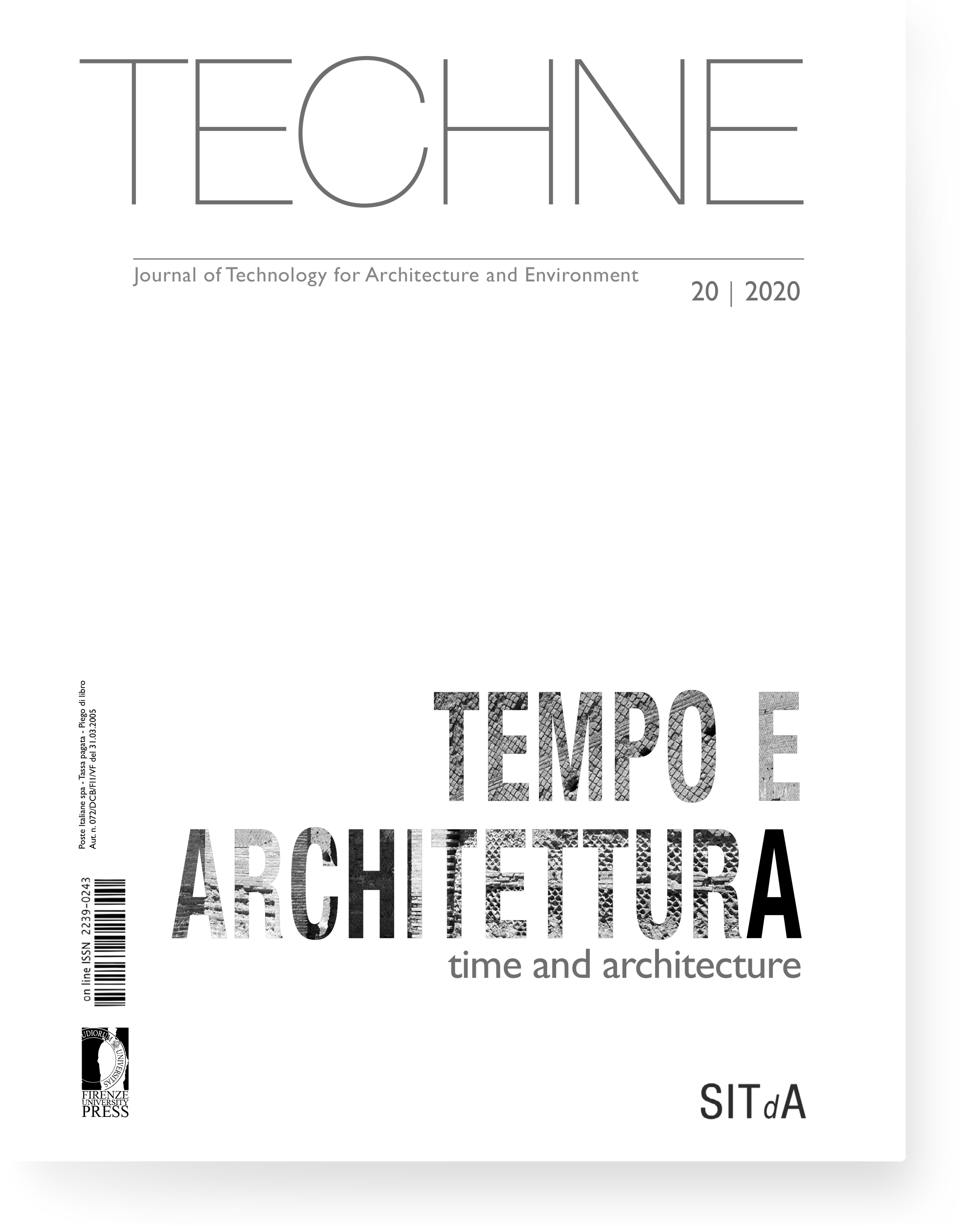Published 2020-07-29
Keywords
- Time,
- Senses,
- Architecture,
- Chronotypes,
- Materials
How to Cite
Abstract
Today more than ever, our habitats are subject to constant changes and reconfigurations. If the architecture of the twentieth century were devoted to the design of the forms of space, it could be said that architecture of the twenty-first century focuses on designing the forms of time. This is temporal within spatial architecture – that already exists – which through time-based design is re-functionalised, revitalised and re-signified. These scenarios are already underway, as we can verify from the ways we live the spaces using new media. They arise from the simultaneity produced by the coexistence of different realities in the same spaces, but which – on the contrary – also require forms of ubiquity to enter and leave virtual realities and digital worlds. Time-based design creates other hierarchies, compared to the spatial logics that have shaped the buildings we have lived in for millennia, because the possibility of subverting the “consecutive” sequence of spaces means working on the folds of time: a real “habitat”. The materials, therefore, become a new frontier on which time experiments in space. Their increasingly “living” performance is part of the concept of a building, which arises within a temporal and spatial cycle to be reformulated, and which can be computed up to its micro-structure. The theme of time concerns all the scales of the project, from micro materials to the macro dimensions of the city. The latter is redesigned in its new morphologies by means of transport capable of deforming the Cartesian coordinates of space over time, to fold and reshape the planes, and to finally define new proximity and distances.






